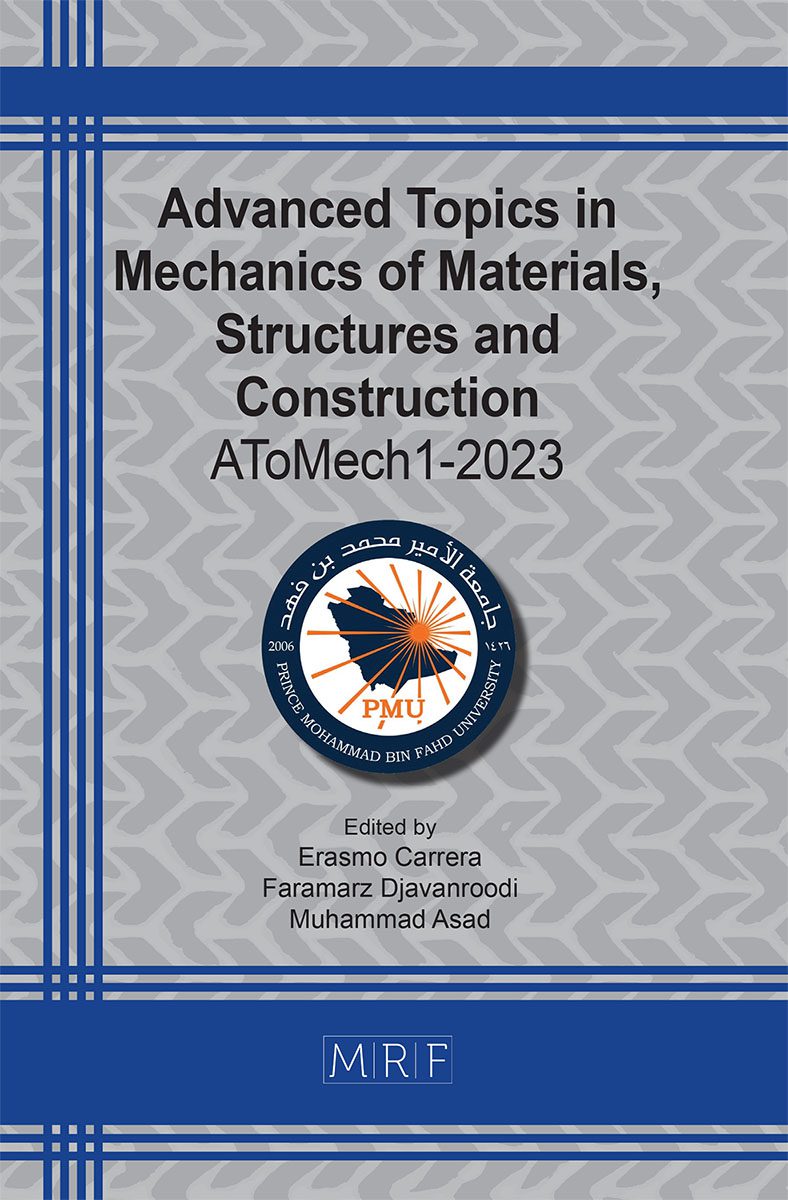Assessment of recent methods for determination of soil final settlement using field data
Mohamed Aymen Dali, Ahcène Benamghar
download PDFAbstract. The problem of soil consolidation was first studied by Terzaghi who formulated the well-known one-dimensional consolidation theory. However, this widely used method was found to provide poorly accurate estimations, since Terzaghi considered the assumption of constant permeability and consolidation coefficient. The poor accuracy is also due to the low resemblance between laboratory results and field actual measurements. In order to overcome this issue, many researchers proposed new approaches to estimate and predict soil settlement more accurately. Among these approaches, field-based methods are particularly promising. For instance, the Asaoka method (1978), Sridharan (1987) method, Tan (1995) method, Chunlin’s method (2014), and recent methods of Guo et al. (2017, 2018b) and Guo et al. 2018(a,). This paper aims to assess and discuss the results of some recent methods using a field consolidation monitoring data set.
Keywords
Soil Settlement, Coefficient of Consolidation, Hyperbolic Method, Asaoka’s Method, Guo, Prediction
Published online 8/10/2023, 13 pages
Copyright © 2023 by the author(s)
Published under license by Materials Research Forum LLC., Millersville PA, USA
Citation: Mohamed Aymen Dali, Ahcène Benamghar, Assessment of recent methods for determination of soil final settlement using field data, Materials Research Proceedings, Vol. 31, pp 86-98, 2023
DOI: https://doi.org/10.21741/9781644902592-10
The article was published as article 10 of the book Advanced Topics in Mechanics of Materials, Structures and Construction
![]() Content from this work may be used under the terms of the Creative Commons Attribution 3.0 license. Any further distribution of this work must maintain attribution to the author(s) and the title of the work, journal citation and DOI.
Content from this work may be used under the terms of the Creative Commons Attribution 3.0 license. Any further distribution of this work must maintain attribution to the author(s) and the title of the work, journal citation and DOI.
References
[1] Akira Asaoka. “Observational procedure of settlement prediction”. In: Soils and foundations 18.4 (1978), pp. 87-101. https://doi.org/10.3208/sandf1972.18.4_87
[2] Nabor Carrillo. “Simple two and three dimensional case in the theory of consolidation of soils”. In: Journal of Mathematics and Physics 21.1-4 (1942), pp. 1-5. https://doi.org/10.1002/sapm19422111
[3] Jean Costet et al. Cours pratique de mécanique des sols. Dunod Paris, 1969.
[4] J Michael Duncan. “Limitations of conventional analysis of consolidation settlement”. In: Journal of geotechnical engineering 119.9 (1993), pp. 1333-1359. https://doi.org/10.1061/(ASCE)0733-9410(1993)119:9(1333)
[5] W Guo and J Chu. “New observational method for prediction of one-dimensional consolidation settlement”. In: Géotechnique 67.6 (2017), pp. 516-522. https://doi.org/10.1680/jgeot.16.P.089
[6] Wei Guo, Jian Chu, and Wen Nie. “An observational method for consolidation analysis of the PVD-improved subsoil”. In: Geotextiles and Geomembranes 46.5 (2018), pp. 625-633. https://doi.org/10.1016/j.geotexmem.2018.04.014
[7] Wei Guo, Jian Chu, and Wen Nie. “Design chart for the modified hyperbolic method”. In: Soils and Foundations 58.2 (2018), pp. 511-517. https://doi.org/10.1016/j.sandf.2018.02.014
[8] S Hansbo,MJamiolkowski, and L Kok. “Consolidation by vertical drains”. In: Geotechnique 31.1 (1981), pp. 45-66. https://doi.org/10.1680/geot.1981.31.1.45
[9] Robert D Holtz,William D Kovacs, and Thomas C Sheahan. An introduction to geotechnical engineering. Vol. 733. Prentice-Hall Englewood Cliffs, 1981.
[10] Chunlin Li. “A simplified method for prediction of embankment settlement in clays”. In: Journal of Rock Mechanics and Geotechnical Engineering 6.1 (2014), pp. 61-66. https://doi.org/10.1016/j.jrmge.2013.12.002
[11] A Sridharan, NS Murthy, and K Prakash. “Rectangular hyperbola method of consolidation analysis”. In: Geotechnique 37.3 (1987), pp. 355-368. https://doi.org/10.1680/geot.1987.37.3.355
[12] Siew-Ann Tan. “Hyperbolic method for settlements in clays with vertical drains”. In: Canadian Geotechnical Journal 31.1 (1994), pp. 125-131. https://doi.org/10.1139/t94-014
[13] Siew-Ann Tan. “Ultimate settlement by hyperbolic plot for clays with vertical drains”. In: Journal of geotechnical engineering 119.5 (1993), pp. 950-956. https://doi.org/10.1061/(ASCE)0733-9410(1993)119:5(950)
[14] SIEWANN TAN. “Validation of hyperbolic method for settlement in clays with vertical drains”. In: Soils and Foundations 35.1 (1995), pp. 101-113. https://doi.org/10.3208/sandf1972.35.101
[15] SIEWANN TAN and SOONHOE CHEW. “Comparison of the hyperbolic and Asaoka observational method of monitoring consolidation with vertical drains”. In: Soils and Foundations 36.3 (1996), pp. 31-42. https://doi.org/10.3208/sandf.36.3_31
[16] Thiam-Soon Tan, Toshiyuki Inoue, and Seng-Lip Lee. “Hyperbolicmethod for consolidation analysis”. In: Journal of geotechnical engineering 117.11 (1991), pp. 1723-1737. https://doi.org/10.1061/(ASCE)0733-9410(1991)117:11(1723)
[17] Karl Terzaghi and RALPH B Peck. “Soil Mechanics”. In: Engineering Practice. John Wiley and Sons, Inc., New York (1948).
[18] Karl Terzaghi, Ralph B Peck, andGholamrezaMesri. Soilmechanics in engineering practice. John Wiley & Sons, 1996.
[19] Alfredo Urzua, Charles 358 C Ladd, and John T Christian. “New approach to analysis of consolidation data at early times”. In: Journal of Geotechnical and Geoenvironmental Engineering 142.10 (2016), p. 06016009. https://doi.org/10.1061/(ASCE)GT.1943-5606.0001523
[20] Yang-Ping Yao et al. “Postconstruction settlement prediction of high embankment of silty clay at Chengde airport based on one-dimensional creep analytical method: case study”. In: International Journal of Geomechanics 18.7 (2018), p. 05018004. https://doi.org/10.1061/(ASCE)GM.1943-5622.0001191































